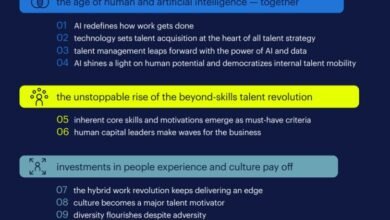9 Future of Work Trends Post-COVID-19
As the pandemic resets major work trends, HR leaders need to rethink workforce and employee planning, management, performance and experience strategies

Source | www.gartner.com | Mary Baker
Nine HR trends emerge as the lasting result of workforce and workplace changes resulting from coronavirus pandemic disruption, according to a Gartner survey of 800-plus HR leaders. The imperative for those leaders now is to evaluate the impact each HR trend will have on their organization’s operations and strategic goals, identify which require immediate action and assess to what degree these HR trends change pre-COVID-19 strategic goals and plans.
32% of organizations are replacing full-time employees with contingent workers as a cost-saving measure
“It’s critical for business leaders to understand that large-scale shifts are changing how people work and how business gets done,” says Brian Kropp, Distinguished Vice President, Gartner. “Leaders who respond effectively to these HR trends can ensure their organizations stand out from competitors.”
Of the nine HR trends, some represent an acceleration of existing shifts; others are new impacts not previously discussed. And in some cases, COVID-19 has forced the pendulum of a long-observed pattern to one extreme.
No. 1: Increase in remote working
A recent Gartner poll showed that 48% of employees will likely work remotely at least part of the time after COVID-19 versus 30% before the pandemic. As organizations shift to more remote work operations, explore the critical competencies employees will need to collaborate digitally, and be prepared to adjust employee experience strategies. Consider whether and how to shift performance goal-setting and employee evaluations for a remote context.
No. 2: Expanded data collection
Gartner analysis shows that 16% of employers are using technologies more frequently to monitor their employees through methods such as virtual clocking in and out, tracking work computer usage, and monitoring employee emails or internal communications/chat. While some companies track productivity, others monitor employee engagement and well-being to better understand employee experience.






